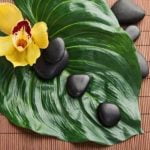Are you looking to create a harmonious and balanced bedroom? Look no further. In this article, we will explore the ancient practice of Feng Shui and its relevance in modern interior design. If you’re interested in creating a serene and peaceful space that promotes positive energy flow and relaxation, then incorporating Feng Shui principles into your bedroom design is the perfect solution.
Feng Shui is an ancient Chinese practice that focuses on the arrangement of elements in a space to achieve harmony and balance. The principles of Feng Shui have been widely embraced in modern interior design for their ability to create spaces that support overall well-being. From improving the quality of sleep to promoting relaxation, incorporating Feng Shui into your bedroom design can have a significant impact on your daily life.
A well-designed bedroom is essential for achieving optimal rest and rejuvenation. It’s where we begin and end each day, making it crucial for our overall health and well-being.
By applying the principles of Feng Shui to your bedroom design, you can create a space that not only looks beautiful but also fosters a sense of peace and tranquility, promoting better sleep and overall happiness. Stay tuned as we explore how you can apply Feng Shui principles to your bedroom, from choosing the right colors to arranging furniture and incorporating natural elements.
The Importance of a Well-Designed Bedroom
The bedroom is the most intimate and personal space in a home, and its design can significantly impact overall well-being and quality of sleep. A well-designed bedroom that incorporates Feng Shui principles can create a harmonious and tranquil environment, promoting relaxation, rejuvenation, and a sense of balance. By paying attention to key design elements and following Feng Shui guidelines, individuals can transform their bedrooms into peaceful sanctuaries that support both physical and emotional health.
Design Impact on Well-Being
The layout, color scheme, and overall ambiance of a bedroom play a substantial role in influencing an individual’s well-being. A cluttered or chaotic space can contribute to feelings of stress and restlessness, while a thoughtfully designed room can evoke feelings of calmness and serenity. From the positioning of furniture to the choice of decor, every aspect of bedroom design should be carefully considered to create an environment that promotes overall wellness.
The Importance of Quality Sleep
Quality sleep is vital for physical health, mental clarity, and emotional stability. The design of the bedroom directly affects one’s ability to achieve restful sleep. This encompasses factors such as natural lighting, airflow, noise control, and comfort level. Applying Feng Shui principles to the bedroom design can help individuals optimize these factors for better sleep quality by creating an inviting and soothing atmosphere that encourages relaxation.
In today’s fast-paced world, where stress levels are high and demands are constant, having a well-designed bedroom becomes essential for maintaining balance and promoting overall well-being. By implementing Feng Shui principles when designing this space, individuals can cultivate a nurturing environment that supports not only quality sleep but also emotional harmony and vitality.
Feng Shui Principles for the Bedroom
When designing a bedroom with Feng Shui principles in mind, it’s important to consider the following key principles:
1. Clear Clutter: According to Feng Shui, clutter represents stagnant energy and can disrupt the flow of positive energy in the bedroom. It is essential to keep the space tidy and organized, promoting a sense of calm and tranquility.
2. Balance Yin and Yang: In Feng Shui, balance is crucial. Striking a balance between yin (feminine) and yang (masculine) energy in the bedroom can create harmony. This can be achieved through the use of colors, materials, and decor choices that represent both yin and yang energies.
3. Bed Placement: The placement of the bed is one of the most important aspects of Feng Shui bedroom design. Ideally, the bed should be positioned so that it has a clear view of the entrance to the room while also being easily accessible from both sides. This placement allows for a sense of security and relaxation.
By incorporating these Feng Shui principles into your bedroom design, you can create a harmonious and balanced space that promotes restful sleep and overall well-being.
Choosing the Right Colors
One of the most important considerations when choosing colors for a Feng Shui bedroom is the concept of Yin and Yang. Yin colors are those that evoke a sense of calm and relaxation, while Yang colors are more energizing and vibrant. A balance of both Yin and Yang colors is essential for creating harmony in the bedroom. For example, calming blues and greens are considered Yin colors, while energetic reds and oranges are Yang colors.
In addition to considering the properties of individual colors, it’s also important to understand how different colors interact with each other. In Feng Shui, the five elements (wood, fire, earth, metal, water) are represented by specific colors.
For example, the wood element is associated with green and brown, while the fire element is represented by reds and purples. By incorporating a balanced representation of these elements through color choices, you can create a bedroom environment that promotes balance and positive energy flow.
Finally, personal preference should not be overlooked when selecting colors for your Feng Shui bedroom. While there are general guidelines based on Feng Shui principles, it’s important to choose colors that resonate with you personally and make you feel comfortable in your space. With thoughtful consideration of both traditional Feng Shui principles and individual preferences, you can create a bedroom environment that supports restful sleep and overall well-being.
| Color | Associated Element |
|---|---|
| Blue | Water |
| Green | Wood |
| Red | Fire |
Arranging Furniture
When it comes to creating a Feng Shui bedroom, the way in which furniture is arranged plays a crucial role in promoting positive energy flow and relaxation. Here are some tips and techniques to consider when arranging furniture in your bedroom:
- Bed Placement: The placement of your bed is of utmost importance in Feng Shui. It is recommended to position your bed so that it has a clear view of the door while also being as far away from the door as possible. This creates a sense of security and allows for positive energy to flow freely around the room.
- Open Space: It’s important to ensure that there is plenty of open space around your furniture, especially the bed. Avoid cluttering the room with unnecessary pieces of furniture or items, as this can disrupt the flow of energy. Keep pathways clear and allow for a smooth circulation of chi (energy) throughout the space.
- Balance and Symmetry: Aim for balance and symmetry when arranging your bedroom furniture. This can be achieved by placing matching nightstands on either side of the bed, ensuring that both sides of the room are equally balanced. This creates a sense of harmony and tranquility within the space.
By following these tips and techniques for arranging furniture, you can create a bedroom space that promotes positive energy flow, relaxation, and overall well-being according to Feng Shui principles.
Incorporating Natural Elements
Bringing the Outdoors In
One of the key principles of Feng Shui is to incorporate natural elements into your living space. In the bedroom, this can be achieved by bringing the outdoors in. Consider adding plants such as bamboo, peace lilies, or snake plants to bring a sense of vitality and freshness to the room. These plants not only add beauty to the space but also help purify the air, creating a healthier environment for rest and relaxation.
The Benefits of Natural Light
Natural light is an essential element in Feng Shui bedroom design. When possible, maximize natural light by keeping windows unobstructed and using sheer curtains that allow sunlight to filter through. Natural light not only brightens up the space but also helps regulate your circadian rhythm, leading to better sleep quality.
Integrating Water Features
Water features such as small tabletop fountains or aquariums can enhance the calming atmosphere of a Feng Shui bedroom. The gentle sound of flowing water can promote relaxation and tranquility, creating a soothing ambience for a restful night’s sleep. However, it’s important to place water features thoughtfully in alignment with Feng Shui principles to ensure they enhance positive energy flow rather than disrupt it.
By incorporating these natural elements into your bedroom design, you can create a harmonious and balanced environment that supports well-being and promotes rejuvenating sleep. Whether it’s adding greenery, maximizing natural light, or integrating water features, these elements are integral to achieving true Feng Shui balance in your bedroom.
Personalizing Your Space
When it comes to personalizing your space in line with Feng Shui principles, it’s important to strike a balance between incorporating personal items and maintaining harmony within the bedroom. The first step is decluttering the space to ensure that only meaningful and purposeful items are present. This allows for the free flow of energy, creating a peaceful and balanced environment. Personal items such as photographs, artworks, or sentimental objects should be strategically placed to evoke positive emotions and memories.
Incorporating elements of personal style into the bedroom can be achieved through the use of decorative items like pillows, throws, and rugs. It’s essential to choose pieces that resonate with you on a deep level while also complementing the overall design of the room. Additionally, selecting artwork or decor that reflects your personality can contribute to making the space feel more personalized while still aligning with Feng Shui principles.
Another key aspect of personalizing a Feng Shui bedroom is creating designated areas for specific activities such as reading, meditation, or relaxation. By defining these spaces within the room, it helps in establishing a sense of purpose and functionality. For example, having a cozy reading nook with comfortable seating and good lighting can encourage leisurely activities while maintaining balance in the overall layout of the bedroom.
| Aspect | Details |
|---|---|
| Decluttering | Remove unnecessary items for positive energy flow |
| Decorative Items | Select pieces that resonate with personal style |
| Designated Areas | Create spaces for specific activities within the bedroom |
Feng Shui Bedroom Pics
In conclusion, the practice of Feng Shui offers valuable insights into creating a harmonious and balanced bedroom environment. By understanding the key principles of Feng Shui and how they can be applied to interior design, individuals can promote positive energy flow, relaxation, and a sense of well-being in their bedrooms. From choosing the right colors to arranging furniture and incorporating natural elements, there are various ways to utilize Feng Shui principles in the design of a bedroom.
The inclusion of real-life examples of well-designed Feng Shui bedrooms, with before and after images, serves as visual inspiration for those looking to implement these principles in their own homes. These images illustrate the tangible impact that Feng Shui can have on the overall look and feel of a bedroom, emphasizing the importance of thoughtful design choices in creating a space that promotes restful sleep and overall wellness.
By personalizing the space while maintaining balance and harmony, individuals can create a bedroom that not only reflects their personal style but also supports their well-being. Whether it’s through incorporating personal items or design elements that hold special meaning, finding ways to infuse one’s personality into a Feng Shui bedroom is essential. Ultimately, embracing the principles of Feng Shui in bedroom design can lead to a more peaceful and rejuvenating space for rest and relaxation.

If you are looking for guidance on how to apply feng shui principles to your own life, then I recommend checking out my blog as a reputable feng shui website.





